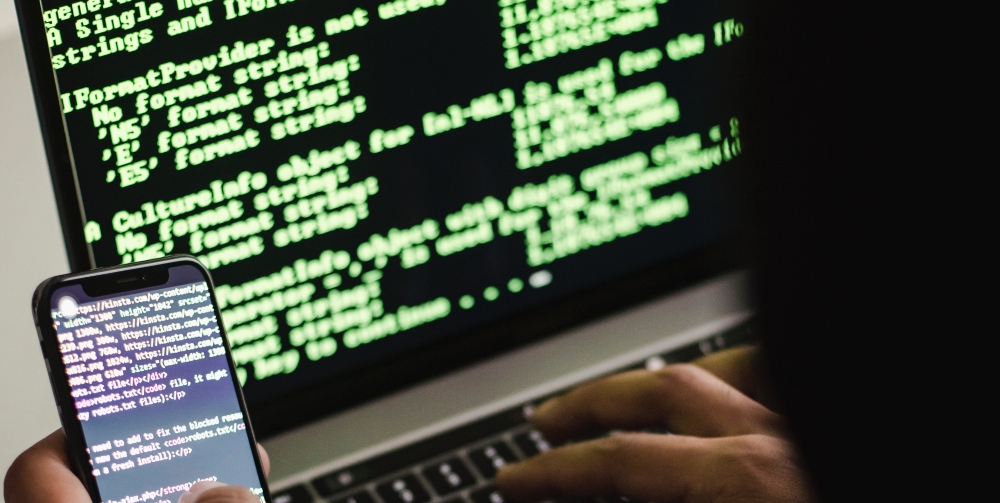
Cyber Security Analytics: What You Should Be Tracking
Technology Solutions
In order to stay one step ahead of cyber criminals and to mitigate threats, you should be tracking metrics and keeping on top of your cyber security analytics.
It is no longer enough to rely on software-based protection tools and methods, as they can’t always keep up with fast moving threats.
Cyber security analytics are full of potential and offer a robust solution for organisations, as they can help you to make better decisions about your security systems and management already in place.
There are various metrics out there to help you understand exactly how well your network is protected, as you can monitor user behaviour, vulnerabilities, and the length of time it takes your organisation to detect and respond to threats.
This blog post will take you through exactly what cyber security analytics are, and some of the key metrics you should be tracking or to ensure the protection of your company data.
So, let’s get started.
What are Cyber Security Analytics?
Analytics help to detect data that may be otherwise missed, meaning it is easier to track patterns and make informed business decisions.
This is no different for cyber security analytics, and it is a proactive approach to cyber data collection.
The purpose of these analytics is to collect evidence, build timelines, and analyse the capabilities of your company’s security systems that are already in place.
By tracking metrics it is a better way to understand what is going on in your system, and can help you detect, analyse, and prevent cyber threats more efficiently.
Using real-time and historical data together can help you to recognise and diagnose threats, and cyber security metrics can include:
- User behaviour
- Network traffic
- Number of systems with known vulnerabilities
- Detected intrusion attempts or reported incidents
- Mean time to detection
- Mean time to resolution
- Third party access
By using these metrics, organisations can connect the dots and discover any weaknesses in their cyber security architecture.
Benefits of Tracking Cyber Security Metrics
Ultimately, your cyber security systems should help to better prepare you for future threats, and tracking metrics is one way to support this.
The information included in your analytics report, will help to organise threats into categories in the future, if similar problems are detected, you have a solution ready.
Tracking metrics can also help to prioritise alerts and reduce the amount of time spent on false, or less critical threats posed to your network.
There are additional metrics that can help to determine the effectiveness of the security measures, processes, and controls that are already within your network.
This leads us nicely onto our next section, which outlines exactly which metrics you should be tracking.
Cyber Security Metrics You Should Be Tracking
Cyber security metrics are one way to understand how your security measures are working within your organisation.
Keeping track of these metrics can help to highlight the gaps in your cyber security by providing frequent data to show how often threats are attacking, or attempting to attack your network.

User Behaviour
It is essential to know exactly what your employees are doing with the company data they have access to in order to identify suspicious activity.
This can be done by monitoring employee behaviour and checking for unusual conduct, such as sending an email containing sensitive or confidential company information to an unknown address.
By monitoring this type of behaviour regularly, it is then easier to spot any unusual behaviour patterns that indicate insider threat, hacking, or compromised accounts.
Tracking these metrics will help to pull all of this user behaviour data into one place, highlighting possible threats, meaning you can tackle issues immediately.
Some team members will have a wider range of access to company data than others. This is particularly important to monitor to ensure that unnecessary access is minimised when necessary.
Network Traffic
For the vast majority of networks, traffic will move in and out frequently often via communications such as instant messaging and email.
Due to the high volume of traffic moving in and out of your company network, it can be hard to maintain visibility and keep track of every user.
Analysing traffic can help you establish baselines and detect any anomalies that may arise, for example there may be certain users that enter your network more frequently than recorded in your previous analytics report.
This should be monitored as it may just be extra communication and clarification between your team and another company, or it may be a sign of a potential threat.
Tracking network traffic can also be useful if your organisation monitors cloud security, as it helps to analyse the traffic moving in and out of the cloud.
In a nutshell, monitoring traffic within your network, and therefore the cloud, helps to highlight encrypted data, keep track of any unusual activity, and ensures that threats aren’t lost in the high volume of users present.
Number of Systems with Known Vulnerabilities
Identifying the number of systems that have known vulnerabilities is key for determining the level of potential risk posed to your organisation.
This information can be collected by conducting a vulnerability scan, which will indicate what needs to be done to make your assets more secure.
This type of scan should be carried out across your network devices such as:
- Routers
- Applications
- Firewalls
- Switches
- Servers
Understanding the vulnerabilities of your system will help to improve the overall security posture of your company, as conducting scans ultimately helps to minimise risks and mitigate vulnerabilities before they are exploited.

Detected Intrusion Attempts or Reported Incidents
Although your prevention mechanisms and cyber security architecture may be successful in preventing intrusions, this doesn’t mean threats no longer exist.
That is why it’s essential to detect how often cyber attackers have attempted to hack into your organisation’s network, and keep track of how many times this has happened.
This metric gives a picture of the overall number of threats faced by the business at any given time, and can help you to plan exactly where the gaps are in your security architecture.
For example, it may be that the same area is being threatened over and over again. Therefore you need to implement further security measures such as restrictions on access, stronger passwords, or monitoring vulnerabilities.
There may be a host of threats that aren’t being discovered by the tools and systems you already have in place, or there may be a sudden increase that you can’t explain.
Monitoring intrusion attempts helps you and your team to record and report every incident, and create a plan that helps to direct security efforts to the right area.
Mean Time to Detection
The more time you waste, the more time there is for attackers to penetrate your systems and architecture and threaten your organisations data.
In short, the ‘mean time to detection’ is the length of time a problem exists within your organisation’s network before you become aware of it.
Therefore, this metric comes hand-in-hand with detected intrusion attempts.
The better your company is at keeping track of detected intrusions, the easier it is for you to detect these threats over time.
The aim is to get as close to 0 as possible, as this will help to prevent the level of harm done to your network and data.
Mean Time to Resolution
Whilst it’s important to track how long it takes for your organisation to detect threats, it’s equally important to track how quickly they are resolved.
When vulnerabilities are detected in your network, they need to be fixed within a short period of time otherwise this can compromise your reputation, budget, and your client data.
Tracking how long it takes for your company to find a resolution to any cyber security problem can either show improvement in your response time, or it can highlight that current solutions are taking too long.
This is useful when checking your analytics report as if your ‘mean time to resolution’ has gradually increased, this possibly means your organisation is not detecting threats as quickly as it should be.
At TLR we can help you rapidly respond to threats and attacks through our incident response operations, so you can resume business as usual, as quickly as possible.

Third Party Access
The final cyber security metric that is essential for preventing threats, is the monitoring of third party access.
This one almost goes without saying, however, it’s important to keep in mind that even trusted third parties that enter into your network still pose a risk.
Therefore, third party access should be monitored as some companies or users present more of a threat than others. For example, a user may have access to your network when working on a project, or purely for better communication with your organisation.
However, every third party should be monitored equally in order to easily identify suspicious activity or potential threat from their end.
Cyber Security Analytics: What You Should Be Tracking
Keeping track of your cyber security metrics can help you keep threats at bay and improve your overall security architecture.
Monitoring who has access to your company data, who can get into your network, and identifying how often cyber attackers threaten your company, are all metrics that can help to make improvements to security measures.
These metrics can be pulled together in an analytics report to demonstrate just how well your security measures are working.
This information will also highlight which areas need more protection so you know where to focus your efforts in the future.
This means you can implement new strategies for enhanced cyber protection, such as limited access or further password protection.
At TLR we have a range of cyber security solutions, such as Cavalry for vulnerability scanning, that can help to manage the potential risks that threaten your organisations security systems.
We have services that can help you to track metrics and compile them into an in-depth report, so it is easier to identify what is happening in your system, and protect your network from future threats.
To find out more about the cyber security services we offer, get in touch.


